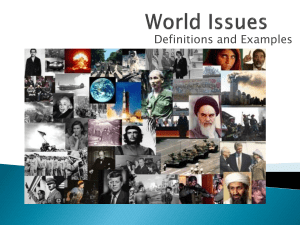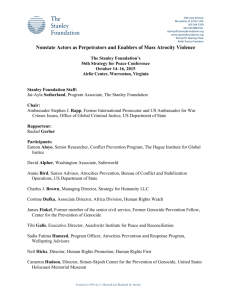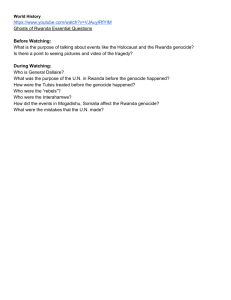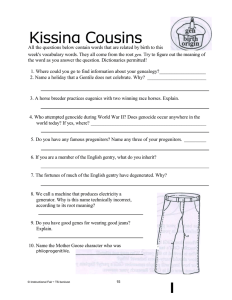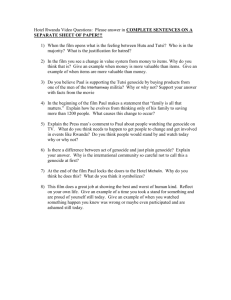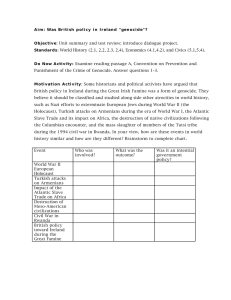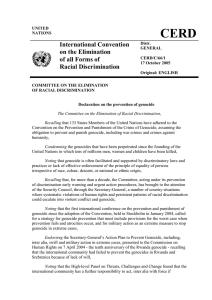Activity 4. United Nations Defines Genocide (1951) Source: Instructions:
advertisement
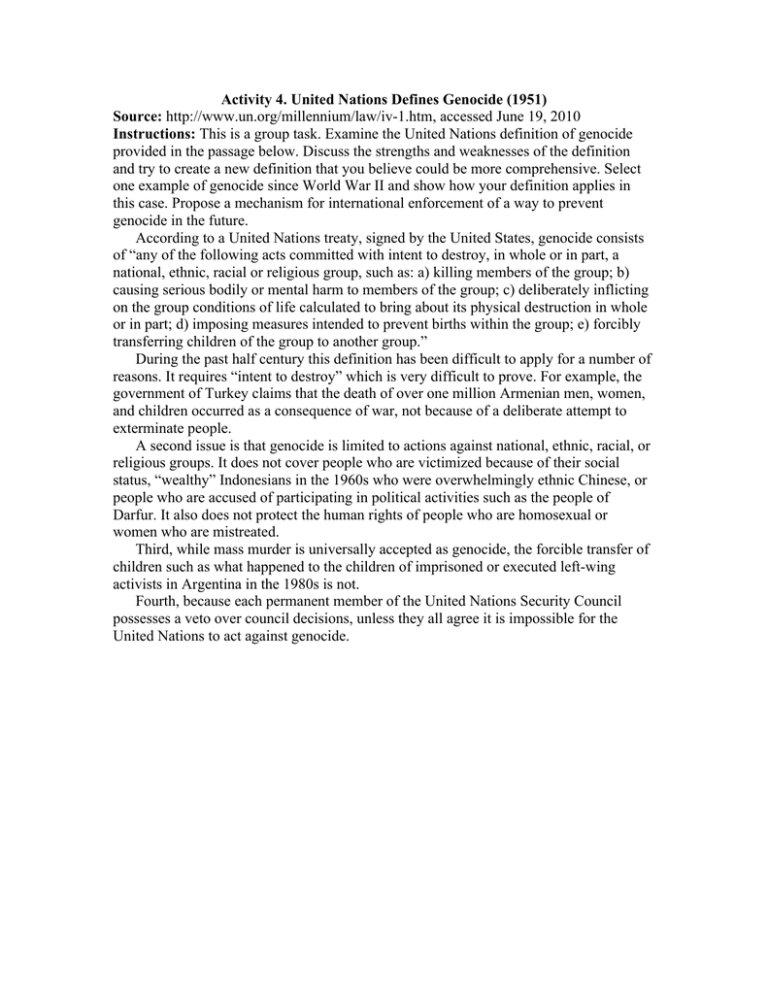
Activity 4. United Nations Defines Genocide (1951) Source: http://www.un.org/millennium/law/iv-1.htm, accessed June 19, 2010 Instructions: This is a group task. Examine the United Nations definition of genocide provided in the passage below. Discuss the strengths and weaknesses of the definition and try to create a new definition that you believe could be more comprehensive. Select one example of genocide since World War II and show how your definition applies in this case. Propose a mechanism for international enforcement of a way to prevent genocide in the future. According to a United Nations treaty, signed by the United States, genocide consists of “any of the following acts committed with intent to destroy, in whole or in part, a national, ethnic, racial or religious group, such as: a) killing members of the group; b) causing serious bodily or mental harm to members of the group; c) deliberately inflicting on the group conditions of life calculated to bring about its physical destruction in whole or in part; d) imposing measures intended to prevent births within the group; e) forcibly transferring children of the group to another group.” During the past half century this definition has been difficult to apply for a number of reasons. It requires “intent to destroy” which is very difficult to prove. For example, the government of Turkey claims that the death of over one million Armenian men, women, and children occurred as a consequence of war, not because of a deliberate attempt to exterminate people. A second issue is that genocide is limited to actions against national, ethnic, racial, or religious groups. It does not cover people who are victimized because of their social status, “wealthy” Indonesians in the 1960s who were overwhelmingly ethnic Chinese, or people who are accused of participating in political activities such as the people of Darfur. It also does not protect the human rights of people who are homosexual or women who are mistreated. Third, while mass murder is universally accepted as genocide, the forcible transfer of children such as what happened to the children of imprisoned or executed left-wing activists in Argentina in the 1980s is not. Fourth, because each permanent member of the United Nations Security Council possesses a veto over council decisions, unless they all agree it is impossible for the United Nations to act against genocide.

